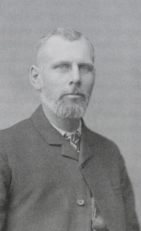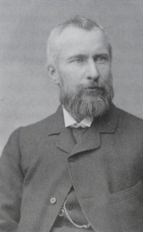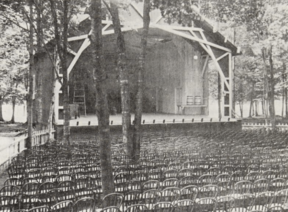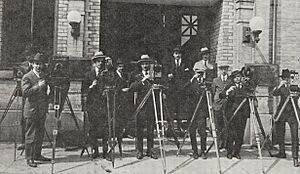Cinema of Canada facts for kids
Quick facts for kids Cinema of Canada |
|
|---|---|
 |
|
| No. of screens | 3,114 (2015) |
| • Per capita | 9.6 per 100,000 (2015) |
| Main distributors | Universal 20.9% Disney 18.7% Warner Bros. 13.3% |
| Produced feature films (2015) | |
| Total | 103 |
| Fictional | 77 (74.8%) |
| Documentary | 26 (25.2%) |
| Number of admissions (2015) | |
| Total | 118,000,000 |
| Gross box office (2015) | |
| Total | C$986 million |
| National films | C$18.8 million (1.9%) |
Movies in Canada have a long history, starting way back in 1896 in Saint-Laurent, Quebec. For a long time, the film industry in Canada was greatly influenced by the United States. American filmmakers often used Canada as a place to shoot their movies.
Early Canadian films were made by companies like Edison Studios. The Canadian Pacific Railway also helped support early filmmakers, including James Freer, who made Ten Years in Manitoba, one of the first known Canadian films. Evangeline is known as the first full-length Canadian movie. Important people like George Brownridge and Ernest Shipman helped shape Canadian cinema in the 1920s and 1930s.
The Canadian government also got involved. The Canadian Government Motion Picture Bureau was created in 1918. It later joined with the National Film Board of Canada (NFB), which became very important for Canadian filmmaking, especially under John Grierson's leadership. The government also started offering financial help to the film industry through programs like the Capital Cost Allowance and Telefilm Canada.
Contents
- Exploring the History of Canadian Cinema
- See also
Exploring the History of Canadian Cinema
How Film Arrived in Canada
The First Movie Showings
The very first time a movie was shown in Canada was on June 27, 1896. This happened in Saint-Laurent, Quebec, thanks to Louis Minier and Louis Pupier. For many years, people thought the first showing was in Ottawa by Andrew M. Holland and George C. Holland, but that was later found to be incorrect.
It was tough for a Canadian film industry to grow at first. Canada didn't have a very large population, and most entertainment acts came from other countries. Early films were often used to promote companies, encourage people to move to Canada, or show off beautiful places like Niagara Falls.
Early Canadian Filmmakers and Companies
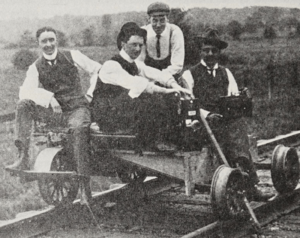
James Freer is thought to be the first Canadian to make movies. He bought a camera and projector in 1897 and filmed farming activities and trains. He even toured the United Kingdom with his films. The Canadian government first got involved in film by supporting his second tour.
The Canadian Pacific Railway (CPR) also hired British filmmaker Charles Urban to make films that would encourage people to settle in western Canada. His company, the Bioscope Company of Canada, filmed across Canada from 1902 to 1903. These films, called Living Canada, were very successful.
Building a Canadian Film Industry
Early Feature Films and Newsreels
The first full-length movie made in Canada was Evangeline. Many attempts were made to create a strong Canadian film industry in the early 1900s. However, most of the new film companies created between 1914 and 1922 didn't actually make any movies.

Newsreels, which were short films showing current events, became popular. Léo-Ernest Ouimet was a pioneer in Canadian newsreels. At his peak, about 1.5 million Canadians watched his newsreels twice a week! However, American companies soon started their own newsreel branches in Canada, making it hard for Canadian companies to compete.
Challenges and Key Figures
Ernest Shipman was a filmmaker who tried a different approach. He would start film companies in different cities, make a few movies with local money, and then move on. His film Back to God's Country was a huge success, earning over $500,000 in its first year.
Trenton, Ontario, became an important place for film production, even though it was a small town. George Brownridge founded Canadian National Features there. He later tried to make films with corporate sponsors, like the CPR. His film The Great Shadow was a success, but his company eventually went bankrupt.

A big film called Carry on, Sergeant! was made in the late 1920s. It had financial backing from important people, including prime ministers. However, the film had many problems during production and didn't do well when it was released. Its failure caused a big slowdown in the Canadian film industry that lasted until after World War II.
The National Film Board of Canada (NFB)
How the NFB Started
The Canadian Government Motion Picture Bureau was formed in 1918. It focused on making films for the government. In 1939, the National Film Board of Canada (NFB) was created based on recommendations from John Grierson. Grierson became the NFB's first leader.
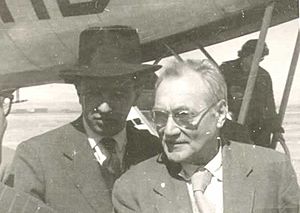
During World War II, the NFB grew a lot, making many films related to the war. These films, like The World in Action and Canada Carries On, were watched by millions of people in Canada and other countries. Grierson believed that Canada's film industry should work with American companies rather than try to make big feature films on its own.
Challenges and Growth
After the war, the NFB faced some challenges, including concerns about its political leanings. However, it continued to grow and make important films.
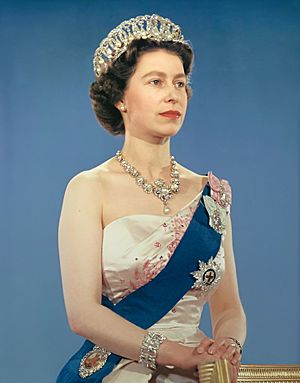
A film called Royal Journey, which showed Princess Elizabeth and Prince Philip's tour of Canada, was a huge success for the NFB. It was seen by a record two million people in Canada and made a big profit.
The NFB also worked to include more French-Canadian filmmakers. In 1964, a separate French-language branch of the NFB was created, which helped French-Canadian cinema to flourish. The NFB also created Studio D in 1974, which was the first publicly funded film unit in the world focused on feminist films. It produced many award-winning movies.
Government Support for Canadian Films
Financial Help and Policies
The Canadian government started offering financial help to the film industry. In 1954, a tax break called the Capital Cost Allowance made it easier for people to invest in Canadian films. This led to a lot more money being invested in Canadian movies and TV shows.
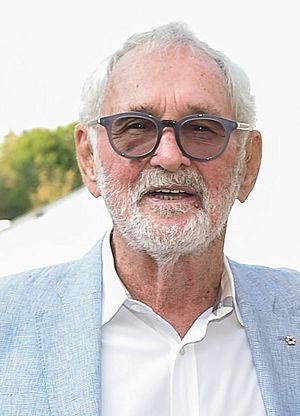
In 1967, the Canadian Film Development Corporation (CFDC) was created with a budget of $10 million to help fund Canadian films. The CFDC helped support many films, including Two Women in Gold, which sold two million tickets and became the highest-grossing Canadian film at the time.
The government also tried to create policies to help Canadian films compete with foreign films. For example, there was a proposal to require distributors to show a certain percentage of Canadian films. However, American distributors opposed this, and the policy was not put into place.
The CFDC's role expanded in 1983 to include television, and its budget grew significantly, helping to fund many more Canadian productions.
The Modern Canadian Film Industry
Growth and Successes
| Year | Films produced | Spending | Box office |
|---|---|---|---|
| 2011-2012 | 114 | $340 million | $27 million |
| 2012-2013 | 128 | $379 million | $24 million |
| 2013-2014 | 117 | $352 million | $28 million |
| 2014-2015 | 131 | $378 million | $19 million |
| 2015-2016 | 122 | $267 million | $18 million |
| 2016-2017 | 123 | $291 million | $32 million |
| 2017-2018 | 122 | $273 million | $20 million |
| 2018-2019 | 139 | $321 million | $17 million |
| 2019-2020 | 126 | $290 million | $8 million |
| 2020-2021 | 75 | $268 million | $18 million |
In the 1960s, many talented filmmakers started coming from Canadian universities. For example, David Cronenberg and Ivan Reitman became well-known directors. The 1970s saw a huge increase in Canadian feature films, with over twice as many made as in the previous fifty years!
Canadian films have achieved international success. Pour la suite du monde was the first Canadian film to be shown at the famous Cannes Film Festival. Porky's became the first Canadian film to earn over $100 million. Animated films like The Care Bears Movie by Nelvana also did very well.
In recent years, provinces like British Columbia, Ontario, and Quebec have seen a big increase in film and television production spending. There's also been a push to increase the number of films directed or written by women, with positive results.
Movie Theatres in Canada
Early Theatres and Chains
In the early days, movies were shown by traveling performers. John Albert Schuberg is credited with bringing movies to Vancouver and Winnipeg. He opened Canada's first permanent movie theatre, the Electric Theatre, in Vancouver in 1902.
Brothers Jay and Jules Allen also built a large chain of theatres. Later, Nathan Nathanson founded Famous Players, which grew to control most of the major movie theatres in Canada's big cities. These large companies also had a big influence on how films were distributed.
Changes in Movie-Going
After World War II, the Canadian box office grew a lot, with more theatres and more people going to see movies. However, in the 1950s, movie attendance started to decline. The number of theatres in Canada also decreased over the years.
In Quebec, a law passed in 1983 required English-language films to be translated into French within sixty days. This helped promote French-language films.
Canada's Role in International Cinema
Canadians in Hollywood
Many Canadians have played a big part in creating and developing the American film industry. Famous names like Louis B. Mayer (who co-founded MGM) and Mack Sennett (a pioneer in comedy films) were born in Canada.
Canada has also been a popular place for international filmmakers to shoot their movies. Early American companies like Kalem Company filmed in Canada as early as 1909.
Working with American Companies
For a long time, most films shown in Canada came from the United States. In 1948, the Canadian government and the Motion Picture Association of America started the Canadian Cooperation Project. The idea was that American companies would film more in Canada and mention Canada in their scripts to promote tourism. However, this project was not very successful in helping Canadian filmmaking grow.
Canadian directors like Norman Jewison sometimes left Canada to work in the United States because of more opportunities there. Canadian animation companies have also contributed to American films, with their software used in movies like Jurassic Park.
Preserving Canadian Film History
Saving Our Movies
It's important to save old films so future generations can watch them. The University of Alberta created a film library in 1917. The National Film Archive of Canada has worked to reconstruct and preserve important films like Carry on, Sergeant!.
Unfortunately, some valuable film collections have been lost over time. For example, a large collection of archival footage worth millions of dollars was destroyed in a fire in 1967. This shows how important it is to protect and preserve Canada's film heritage.
See also
- History of Canadian animation
- Canadian pioneers in early Hollywood
- IMAX
- List of Canadian films
- List of Indigenous Canadian films
- List of Canadian actors
- Top 10 Canadian Films of All Time
- Documentary Organization of Canada
- Northern (genre)
- List of film festivals in Canada
- List of filming locations in Metro Vancouver
- List of films shot in Toronto
- Montreal in films
- World cinema


